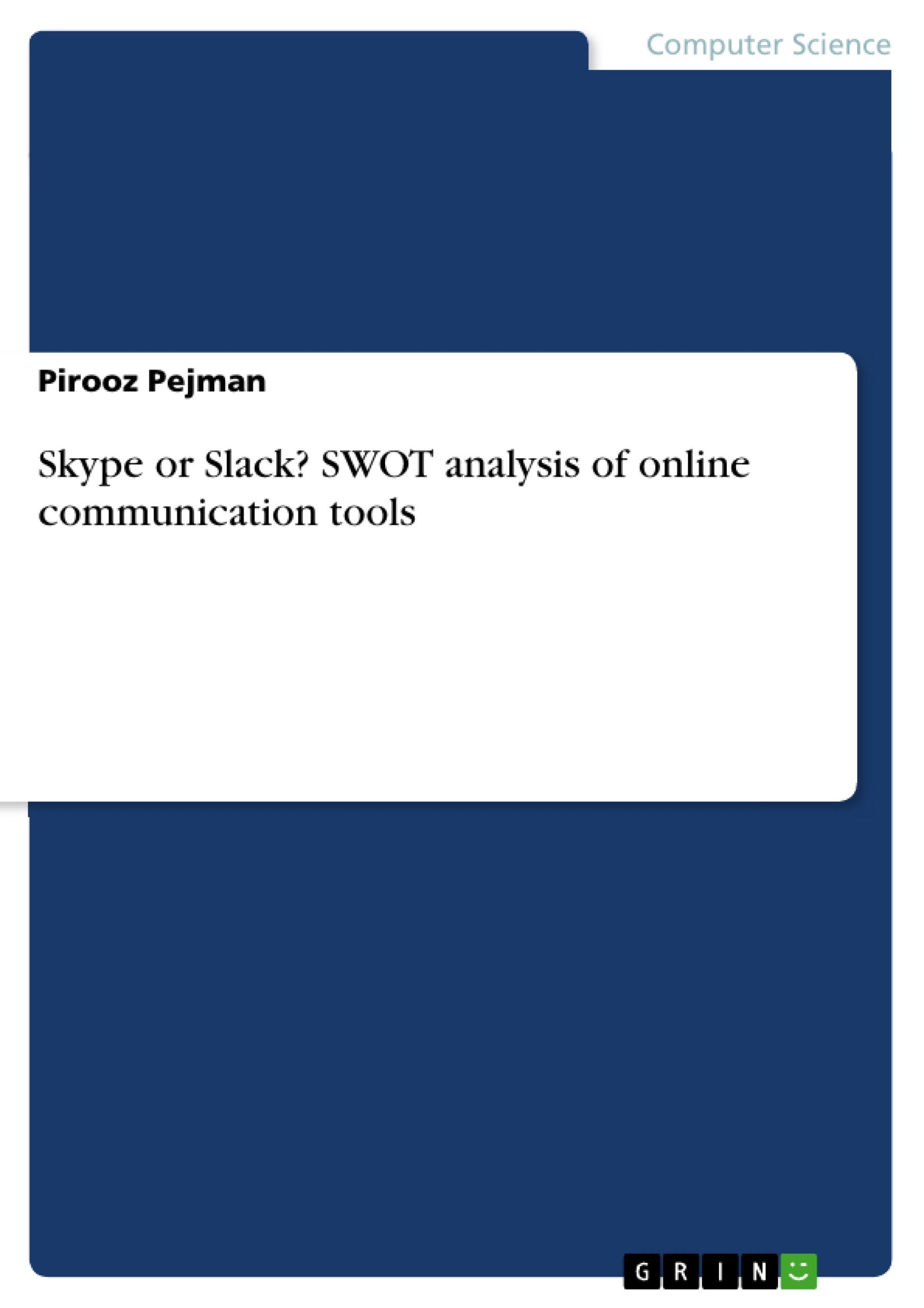In the present paper, various ways of virtual communication will be illustrated. In this connection, first, common possibilities of communicating virtually such as e-mail, instant messaging and VoIP will be presented before two major and popular instant messaging tools available on the Internet, Slack and Skype, are going to be examined in greater detail by pointing out their strength, weaknesses, opportunities and threats with the help of a SWOT-analysis.
This is supposed to figure out the most effective, efficient, useful and safe communication instant messaging tool. Further, it aims at figuring out which tool(s) will prevail in the future and therefore stand(s) the test of time.
In today’s world, the possibilities for communication via Internet have become very common both in private and business matters. Messages can be sent from one corner of the world to the other in the blink of an eye, be it via e-mail, as the technological advanced version of letters, instant messaging with the frequent extra opportunity of a video talk and Internet telephony (VoIP) as a much more inexpensive way of phoning via Internet.
In a rapidly increasing globalized world now more than ever, time is money when it comes to entrepreneurial actions and at the same time of essence for private purposes as we have got used to rapid communication. As an inevitable consequence, people’s attention span as well as patience related to communication or demanding access to information has been reducing drastically. Expectations regarding a safe and extremely fast way of communicating are very high and continue to rise.
Inhaltsverzeichnis (Table of Contents)
- Introduction
- Common online communication tools
- E-mail
- General Information
- SWOT-Analysis
- Instant messaging tools
- General Information
- SWOT-Analysis
- VoIP - Internet telephony
- General Information
- SWOT-Analysis
- E-mail
- Instant messaging tools
- Slack and Skype – a brief Introduction
- SWOT-Analysis by the comparison of Skype and Slack
- Result
- Conclusion
Zielsetzung und Themenschwerpunkte (Objectives and Key Themes)
This paper explores the diverse possibilities of communication via the internet, focusing on the evolution of these tools and their impact on modern communication practices. It examines the strengths, weaknesses, opportunities, and threats (SWOT) of common communication tools like e-mail, instant messaging, and VoIP. The paper then delves into a detailed comparison of two popular instant messaging tools, Slack and Skype, to identify the most effective and efficient tool for modern communication.
- The evolution of online communication tools
- The SWOT analysis of various communication tools
- The comparison of instant messaging tools like Slack and Skype
- The impact of instant messaging tools on communication practices
- The future trends in online communication tools
Zusammenfassung der Kapitel (Chapter Summaries)
The first chapter, "Introduction", introduces the concept of online communication tools in a rapidly globalized world and highlights the importance of efficient and fast communication. The chapter also outlines the scope of the paper, which focuses on analyzing common online communication tools like e-mail, instant messaging, and VoIP, along with a detailed comparison of Slack and Skype.
Chapter 2, "Common online communication tools", explores various online communication tools, including e-mail, instant messaging, and VoIP. The chapter analyzes each tool's strengths, weaknesses, opportunities, and threats (SWOT) through a detailed SWOT analysis. This chapter provides an overview of these tools and their key characteristics.
Chapter 3, "Instant messaging tools", focuses on the comparison of two popular instant messaging tools, Slack and Skype. It conducts a SWOT analysis to identify the strengths, weaknesses, opportunities, and threats of each tool. This chapter aims to determine the most efficient and effective tool for modern communication.
Schlüsselwörter (Keywords)
The paper focuses on online communication tools, specifically e-mail, instant messaging, VoIP, Slack, and Skype. It analyzes the SWOT of these tools and compares Slack and Skype based on their features and functionalities. Other key concepts include communication efficiency, communication trends, and the impact of technology on communication practices.
- Quote paper
- Pirooz Pejman (Author), 2016, Skype or Slack? SWOT analysis of online communication tools, Munich, GRIN Verlag, https://www.grin.com/document/322697



